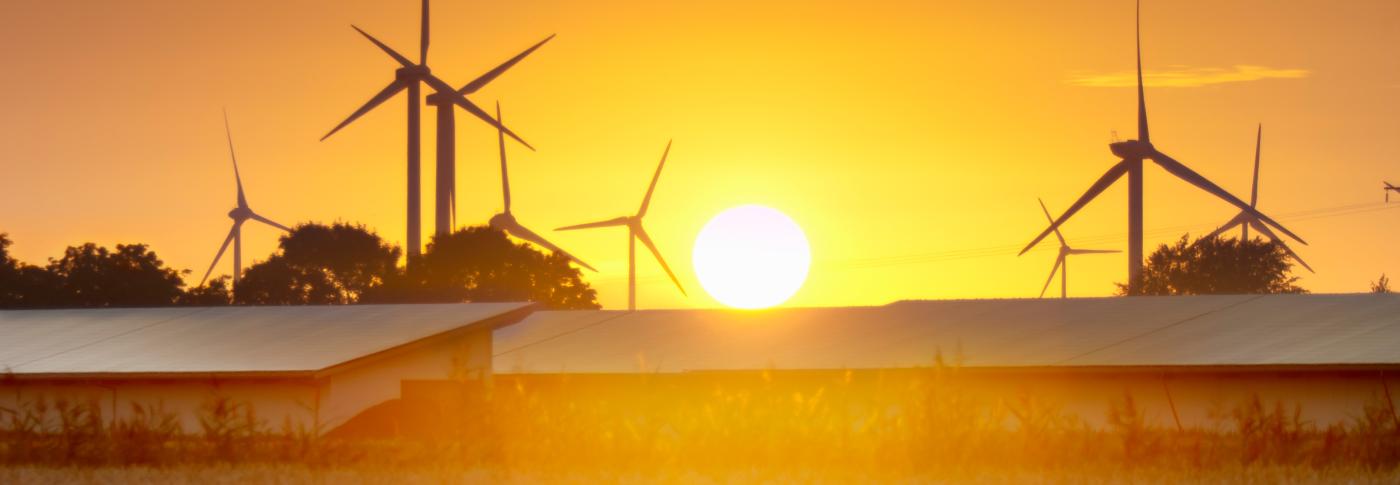The critical role of innovation in delivering a net zero…
27 Mar 2024 - 2 minute read

14 Feb 2022 - 3 minute read
Renewable generators get green light to provide stability services to National Grid ESO
Formal change to the grid code will enable a new market in stability services, unlocking the potential for renewables to support the grid
World first ‘grid forming’ reform is key step towards operating a decarbonised electricity system by 2035 and delivering net zero
National Grid ESO will for the first time be able to procure grid stability services from renewable generators, in a move seen as crucial to decarbonising the power system and enabling net zero.
From today wind, wave and solar generators will be able to offer the kind of stability services which have traditionally been delivered by conventional generators.
The move is a result of a game changing modification to the GB Grid Code - the rulebook that sets the specification for everything that connects to the grid. This Grid Code change sets a specification for ‘grid forming’ or virtual synchronous machine capability which will enable renewable generators across Britain and interconnectors to compete to provide stability services alongside operators of synchronous generation.
Tony Johnson, who led the project for National Grid ESO’s markets team, said:
This is a breakthrough moment, a key piece in the energy transition jigsaw, that will ensure we can operate a fully decarbonised grid and deliver on our net zero commitments.
It’s the culmination of up to 10 years of thinking and working with stakeholders to find the common ground between what equipment is capable of doing and what the system needs.
It also ensures that as we transition away from conventional fossil fuelled generation, we can operate the grid securely and efficiently, which will ultimately save consumers money.
The code change means interested stakeholders can now prepare their equipment to meet the required specification to be able to participate in the procurement process for system services including providing inertia and frequency support. This is currently being progressed through National Grid ESO’s stability pathfinder projects.
Having a stable grid is crucial to delivering a reliable electricity supply. It ensures a steady frequency of 50Hz is maintained and voltages don’t fluctuate which also protects equipment.
‘Grid forming’ ability allows converter connected equipment (equipment connected to the network through a HVDC converter, such as renewable generation or interconnectors) to provide system stability support in a similar way to conventional generators that are directly connected to the transmission system. It is achieved by the converter’s control system responding very quickly to system conditions which simulates the response of traditional plant.
This supports the transition of the system away from conventional fossil fuelled generation, ensures continued system security as this transition takes place and saves consumers money by helping the ESO to efficiently operate the system.
Britain is the first country to have achieved this step, which is being watched with interest by system operators and manufacturers around the world.
ENDS
Notes to editors
GC0137 is a Grid Code modification that has been developed with the help of manufacturers and developers to set a specification for ‘grid forming’
‘Grid forming’ (or virtual synchronous machine capability) is a way that converter-connected technologies (renewables, interconnectors) can participate in future stability services. This is because they can provide system support in a similar way to conventional generators, which is done by the converter’s control system responding very quickly to system conditions.
GC0137 was approved by Ofgem on January 31st 2022 following a lengthy development process. The code change is being formally implemented from today, February 14th 2022.
National Grid ESO is continuing to work with an industry expert group in providing more detailed guidance on the requirements to make sure that stakeholders can fully engage with future procurement opportunities.
Further details can be found on the Grid Code website (modification GC0137 ) and you can also read Ofgem’s decision here.
Stakeholders can also find more details on National Grid ESO’s stability pathfinders.
Contact details
For media enquiries about National Grid ESO, please contact Alan Harris (07815 464323).